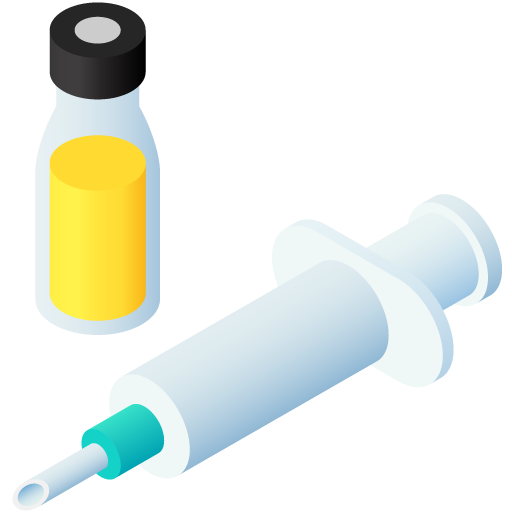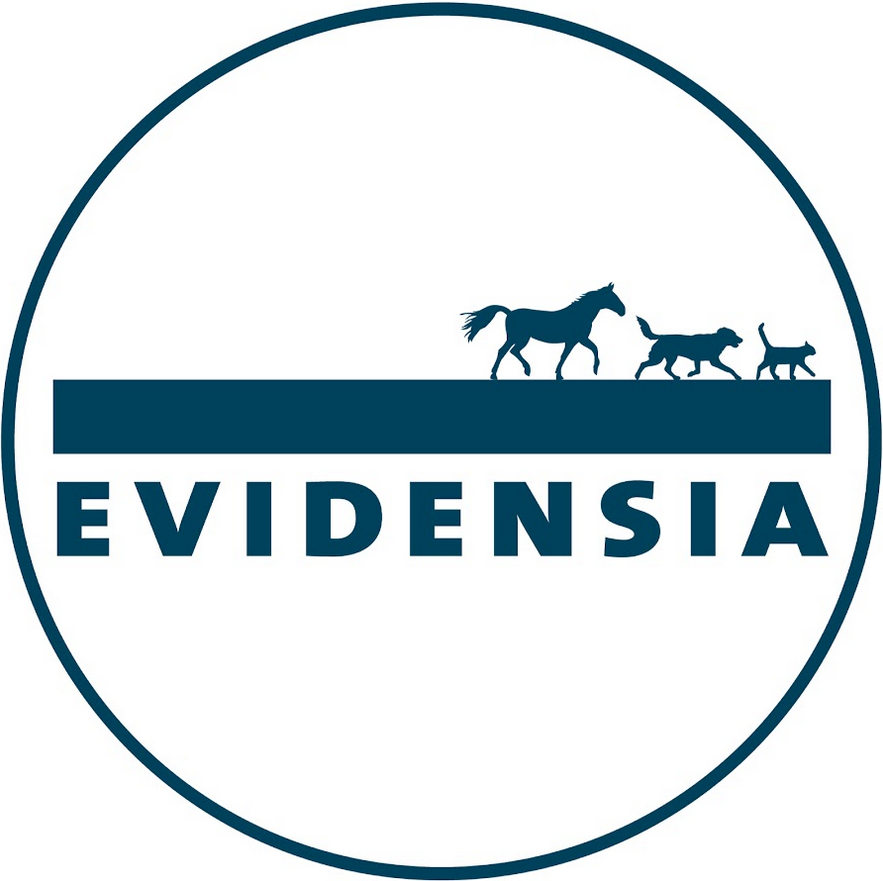Allevinix
Active substance
ATC code
Species
Cattle, pigs and horses.
Indications
Cattle:
- Alleviation of clinical signs of respiratory disease when used concurrently with appropriate anti-infective therapy.
Pigs:
- To support appropriate antibiotic therapy in the treatment of Mastitis-Metritis-Agalactia syndrome.
- Alleviation of fever associated with respiratory disease when used in conjunction with specific antibiotic therapy.
Horses:
- Alleviation of inflammation and pain associated with musculo-skeletal disorders.
- Alleviation of visceral pain associated with colic.
Dose to be administered and administration route
Cattle: intramuscular and intravenous uses
Pigs: intramuscular use
Horses: intravenous use
The body weight should be accurately determined before the administration
Cattle:
2 mg of flunixin per kg bodyweight, equivalent to 2 ml of solution per 50 kg bodyweight, administered once daily by intravenous or intramuscular injection for 1 to 3 consecutive days.
Volumes greater than 20 ml should be divided and administered at least at 2 different injection sites.
Pigs:
To support appropriate antibiotic therapy in the treatment of Mastitis-Metritis-Agalactia syndrome:
2 mg of flunixin per kg bodyweight, equivalent to 2 ml of solution per 50 kg bodyweight, administered once daily for 1 to 3 consecutive days.
Alleviation of fever associated with respiratory diseases:
2 mg of flunixin per kg bodyweight, equivalent to 2 ml of solution per 50 kg bodyweight, administered once daily.
Maximum dosage volume per injection site should not exceed 5 ml. Volumes greater than 5 ml should be divided and administered at different injection sites.
Horses:
Alleviation of inflammation and pain associated with musculo-skeletal disorders:
1 mg of flunixin per kg bodyweight, equivalent to 1 ml of solution per 50 kg bodyweight, administered once daily for 1 to 5 consecutive days.
Alleviation of visceral pain associated with colic:
1 mg of flunixin per kg bodyweight, equivalent to 1 ml of solution per 50 kg bodyweight, administered once daily. Treatment may be repeated once or twice if colic recurs.
The cap can be broached up to 10 times. When treating large groups of animals at one time, use an automatic dosing device.
Adverse reactions
Cattle:
|
Rare (1 to 10 animals / 10,000 animals treated): |
Anaphylaxis (with collapse)1, death1 |
|
Very rare (<1 animal / 10,000 animals treated, including isolated reports): |
Bleeding2, gastrointestinal irritation2, gastric ulceration2, vomiting2, renal function impairment2 |
|
Undetermined frequency |
Renal and hepatic disorders4 Delayed parturition5, increase of stillbirths5, retained placenta6 |
1mainly during rapid intravenous injection
2 mainly in dehydrated or hypovolaemic animals
3 following intramuscular injection
4 idiosyncratic effects, as with other non-steroidal anti-inflammatory drugs
5 through a tocolytic effect by inhibiting prostaglandins that are important in signalling the initiation of parturition
6 in cases of the use of the veterinary medicinal product in the immediate post-partum period
Horses:
|
Rare (1 to 10 animals / 10,000 animals treated): |
Anaphylaxis (with collapse)1, death1 |
|
Very rare (<1 animal / 10,000 animals treated, including isolated reports): |
Bleeding2, gastrointestinal irritation2, gastric ulceration2, vomiting2, renal function impairment2 |
|
Undetermined frequency |
Renal and hepatic disorders3 Delayed parturition4, increase of stillbirths4, retained placenta5 |
Pigs:
|
Very rare (<1 animal / 10,000 animals treated, including isolated reports): |
Bleeding1, gastrointestinal irritation1, gastric ulceration1, vomiting1, renal function impairment1 |
|
Undetermined frequency |
Renal and hepatic disorders2 Delayed parturition3, increase of stillbirths3, retained placenta4 |
1 mainly in dehydrated or hypovolaemic animals
2 idiosyncratic effects, as with other non-steroidal anti-inflammatory drugs
3 through a tocolytic effect by inhibiting prostaglandins that are important in signalling the initiation of parturition
4 in cases of the use of the veterinary medicinal product in the immediate post-partum period
In case of untowards effects stop treatment and seek medical advice.
Reporting adverse events is important. It allows continuous safety monitoring of a veterinary medicinal product. Reports should be sent, preferably via a veterinarian, to either the marketing authorisation holder or its local representative or the national competent authority via the national reporting system. See also the section “Contact details” of the package leaflet for respective contact details.
Dispensing
POM-V - Prescription Only Medicine – VeterinarianSUMMARY OF PRODUCT CHARACTERISTICS
1. NAME OF THE VETERINARY MEDICINAL PRODUCT
Allevinix 50 mg/ml solution for injection for cattle, pigs and horses
2. QUALITATIVE AND QUANTITATIVE COMPOSITION
Each ml contains:
Active substance:
Flunixin ................................................ 50 mg
(as meglumine)
Excipients:
Phenol ................................................. 5 mg
Sodium formaldehyde sulfoxylate........ 2.5 mg Disodium edetate........................................... 0.1 mg For the full list of excipients, see section 6.1.
3. PHARMACEUTICAL FORM
Solution for injection.
Colourless to pale yellow solution, clear and free from particles, with a slight odour of phenol.
4. CLINICAL PARTICULARS
4.1 Target species
Cattle, pigs and horses.
4.2 Indications for use, specifying the target species
Cattle:
- Alleviation of clinical signs of respiratory disease when used concurrently with appropriate anti-infective therapy.
Pigs:
- To support appropriate antibiotic therapy in the treatment of Mastitis-MetritisAgalactia syndrome.
- Alleviation of fever associated with respiratory disease when used in conjunction with specific antibiotic therapy.
Horses:
- Alleviation of inflammation and pain associated with musculo-skeletal disorders.
- Alleviation of visceral pain associated with colic.
4.3 Contraindications
Do not use in animals suffering from chronic musculo-skeletal disorders.
Do not use in animals suffering from cardiac, hepatic or renal disease.
Do not use in animals with gastro-intestinal lesions (gastro-intestinal ulceration or bleeding).
Do not use in case of haemorrhagic disorders.
Do not use in case of hypersensitivity to flunixine meglumine, other NSAIDs or any of the excipients.
Do not use in animals suffering from colic caused by ileus and associated with dehydration.
Do not use the product within 48 hours before expected parturition in cows. In such cases an increase in the number of stillbirths has been observed. Do not exceed the stated dose or the duration of treatment
See also section 4.7.
4.4 Special warnings for each target species
The underlying cause of the inflammatory condition or colic must be determined and treated with appropriate concomitant therapy.
4.5 Special precautions for use
Special precautions for use in animals
Use in any animal less than 6 weeks of age (cattle and horses) or in aged animals may involve additional risk. If such use cannot be avoided, animals may require a reduced dosage and careful clinical management.
It is preferable that NSAIDs which inhibit prostaglandin synthesis are not administered to animals undergoing general anaesthesia until fully recovered.
Avoid use in any dehydrated, hypovolaemic or hypotensive animal except in the case of endotoxaemia or septic shock.
In rare cases, shock (potentially fatal), may occur after intravenous injection, due to a high quantity of propylene glycol in the medicinal product. The product must be injected slowly and at body temperature. Stop injection at the first signs of intolerance and treat for shock if necessary.
Due to its anti-inflammatory properties, flunixin may mask clinical signs and therefore possible resistance to antibiotic treatment.
NSAIDs are known to have the potential to delay parturition through a tocolytic effect by inhibiting prostaglandins that are important in signalling the initiation of parturition. The use of the product in the immediate post-partum period may interfere with uterine involution and expulsion of fetal membranes resulting in retained placentae. See also section 4.7
Special precautions to be taken by the person administering the veterinary medicinal product to animals
The product may cause a reaction in sensitive persons.
People with known hypersensitivity to substances belonging to the non-steroidal antiinflammatory group should avoid contact with the veterinary medicinal product.
Hypersensitivity reactions may be serious.
Avoid contact with skin or eyes.
In case of skin contact, wash exposed area with soap and plenty of water. If symptoms persist, seek medical advice.
In case of contact with the eyes, wash eyes thoroughly with clean water and seek medical advice.
Avoid risk of ingestion, do not eat or drink when using the product and wash hands after use. In case of ingestion of the product seek medical advice.
In case of accidental self injection, seek medical advice immediately and show the package leaflet or the label to the physician.
4.6 Adverse reactions (frequency and seriousness)
As with other non-steroidal anti-inflammatory drugs, idiosyncratic renal or hepatic untoward effects may be observed.
In rare cases, fatal anaphylactic reactions (collapse) have been observed in cattle and horses, mainly during rapid intravenous injection.
Untoward effects include bleeding, gastro-intestinal lesions (irritation, gastric ulceration), vomiting and renal damage mainly in dehydrated or hypovolaemic animals can occur very rarely.
In the horse, after intravenous injection, blood in the faeces has been reported very rarely as well as liquid diarrhoea.
In cattle, a reaction at the injection site may be observed very rarely following intramuscular injection
The product may delay parturition and increase stillbirths through a tocolytic effect by inhibiting prostaglandins that are important in signalling the initiation of parturition. The use of the product in the immediate post-partum period may result in retained placentae.
See also section 4.7.
In case of untoward effects stop treatment and seek medical advice.
The frequency of adverse reactions is defined using the following convention:
- very common (more than 1 in 10 animals treated displaying adverse reaction(s))
- common (more than 1 but less than 10 animals in 100 animals treated)
- uncommon (more than 1 but less than 10 animals in 1,000 animals treated)
- rare (more than 1 but less than 10 animals in 10,000 animals treated)
- very rare (less than 1 animal in 10,000 animals treated, including isolated reports).
4.7 Use during pregnancy, lactation or lay
Studies in laboratory animals have produced evidence of foetotoxicity from flunixin after oral administration (rabbit and rat) and intramuscular administration (rat) at maternotoxic doses as well as an increase in the gestation period (rat).
The safety of flunixin has not been assessed in pregnant mares, breeding stallions and bulls. Do not use in these animals.
The safety of flunixin was demonstrated in pregnant cows and sows, as well as boars. The product may be used in these animals except within the 48 hours preceding parturition (see sections 4.3 and 4.6).
The product should only be administered within the first 36 hours post-partum following a benefit/risk assessment performed by the responsible veterinarian, and treated animals should be monitored for retained placentae.
4.8 Interaction with other medicinal products and other forms of interaction
Do not administer other NSAIDs concurrently or within 24 hours of each other, as it may increase the toxicity, mainly gastro-intestinal, even with low doses of acetylsalicylic acid.
The concurrent administration of corticoids may increase toxicity of the two products and increase the risk of gastro-intestinal ulceration. It should therefore be avoided. Flunixin may reduce the effect of some anti-hypertensive medicinal products, such as diuretics, Angiotensin Conversion Enzyme (ACE) inhibitors, and beta blockers, by inhibition of prostaglandin synthesis.
Concurrent administration of potentially nephrotoxic drugs, particularly aminoglycosides, should be avoided.
Flunixin may reduce renal elimination of some drugs and increase their toxicity, such as aminoglycosides for example.
4.9 Amounts to be administered and administration route
Intramuscular use for cattle and pigs.
Intravenous use for cattle and horses.
The body weight should be accurately determined before the administration
Cattle:
2 mg of flunixin per kg bodyweight, equivalent to 2 ml of solution per 50 kg bodyweight, administered once daily by intravenous or intramuscular injection for 1 to 3 consecutive days.
Volumes greater than 20 ml should be divided and administered at least at 2 different injection sites.
Pigs:
- To support appropriate antibiotic therapy in the treatment of Mastitis-MetritisAgalactia syndrome:
2 mg of flunixin per kg bodyweight, equivalent to 2 ml of solution per 50 kg bodyweight, administered once daily by intramuscular injection for 1 to 3 consecutive days.
- Alleviation of fever associated with respiratory diseases:
2 mg of flunixin per kg bodyweight, equivalent to 2 ml of solution per 50 kg bodyweight, administered once daily by intramuscular injection.
Maximum dosage volume per injection site should not exceed 5 ml. Volumes greater than 5 ml should be divided and administered at different injection sites.
Horses:
- Alleviation of inflammation and pain associated with musculo-skeletal disorders: 1 mg of flunixin per kg bodyweight, equivalent to 1 ml of solution per 50 kg bodyweight, administered once daily by intravenous injection for 1 to 5
consecutive days.
- Alleviation of visceral pain associated with colic:
1 mg of flunixin per kg bodyweight, equivalent to 1 ml of solution per 50 kg bodyweight, administered once daily by intravenous injection. Treatment may be repeated once or twice if colic recurs.
The cap can be broached up to 10 times. When treating large groups of animals at one time, use an automatic dosing device.
4.10 Overdose (symptoms, emergency procedures, antidotes), if necessary
Overdose is associated with gastrointestinal toxicity. Signs of ataxia and incoordination may also appear.
In horses, following 3 times the recommended dose (3 mg/kg bodyweight) administered by the intravenous route, a transient increase in blood pressure may be observed.
In cattle, administration of 3 times the recommended dose (6 mg/kg bodyweight) administered by the intravenous route did not induce untoward effects.
In pigs, following a dose of 2 mg flunixin/kg, administered twice a day, painful reactions at the injection site and an increase in the number of leucocytes was reported.
4.11 Withdrawal period(s)
Cattle:
Meat and offal: 10 days (IV route) / 31 days (IM route). Milk: 24 hours (IV route) / 36 hours (IM route).
Pigs:
Meat and offal: 20 days.
Horses:
Meat and offal: 10 days.
Milk: the product is not authorised for use in lactating animals producing milk for human consumption.
5. PHARMACOLOGICAL PROPERTIES
Pharmacotherapeutic group: Anti-inflammatory and anti-rheumatic products, non steroids - Fenamates
ATCvet code: QM01AG90
5.1 Pharmacodynamic properties
Flunixin (as meglumine) demonstrates potent inhibition of the cyclo-oxygenase system (COX). The enzyme converts arachidonic acid to unstable cyclic endoperoxides, which are converted to prostaglandins, prostacyclin and thromboxane. Some of these prostanoids, such as prostaglandins are mediators for inflammation, pain and fever. The inhibition of the synthesis of such components would be responsible for the therapeutic effects of flunixin meglumine.
Since prostaglandins also play a part in other physiological processes, COX inhibitors may be responsible for some untoward effects such as gastrointestinal and renal damage.
Prostaglandins are involved in the complex process of endotoxaemic shock
5.2 Pharmacokinetic particulars
In cattle, after intramuscular injection at a dose of 2 mg/kg, a maximum concentration of 2.5 μg/ml is observed approximately 30 minutes after injection.
After intravenous injection flunixin distributes rapidly. The elimination is slow (approximately 4 hours).
Flunixin is highly bound to plasma proteins (>99%).
In pigs, after intramuscular injection at a dose of 2 mg/kg, a maximum concentration of 4 μg/ml is observed approximately 30 minutes after injection.
After intravenous injection flunixin distributes rapidly. The elimination is slow (approximately 8 hours).
Flunixin is highly bound to plasma proteins (>98%).
In the horse, after intravenous injection at a dose of 1 mg/kg flunixin distributes rapidly.
The elimination half-life is 1.6 hours.
Flunixin is eliminated mainly via the kidneys as conjuguated form.
6. PHARMACEUTICAL PARTICULARS
6.1 List of excipients
Phenol
Sodium formaldehyde sulfoxylate
Disodium edetate
Sodium hydroxide
Propylene glycol
Dilute hydrochloric acid for pH-adjustment
Water for injections
6.2 Major incompatibilities
In the absence of compatibility studies, this veterinary medicinal product must not be mixed with other veterinary medicinal products.
6.3 Shelf life
Shelf-life of the veterinary medicinal product as packaged for sale in a glass bottle: 3 years
Shelf-life after first opening the immediate packaging: 28 days
6.4 Special precautions for storage
Do not store above 25°C after first opening the immediate packaging.
6.5 Nature and composition of immediate packaging
50, 100 or 250 ml colourless Type II glass vial sealed with chlorobutyl rubber stoppers and a flip-off cap on top of an aluminium crimp seal.
50, 100 or 250 ml translucent PP/Ethylene vinyl alcohol/PP multi-layer plastic vials with bromobutyl rubber stopper with aluminium cap.
1 vial per cardboard box.
Not all pack sizes may be marketed.
6.6 Special precautions for the disposal of unused veterinary medicinal products or waste materials derived from the use of such products
Any unused veterinary medicinal product or waste materials derived from such veterinary medicinal product should be disposed of in accordance with local requirements.
7. MARKETING AUTHORISATION HOLDER
Ceva Animal Health Ltd
Explorer House
Mercury Park
Wycombe Lane
Wooburn Green
High Wycombe
Buckinghamshire
HP10 0HH
United Kingdom
8. MARKETING AUTHORISATION NUMBER
Vm 15052/4144
9. DATE OF FIRST AUTHORISATION
16 April 2013
10. DATE OF REVISION OF THE TEXT
September 2022
Approved 26 September 2022


| Art. Nr. | 15052/5042 |
|---|---|
| EAN | 3411113039011 |
 TRUSTED SOURCE
TRUSTED SOURCE








